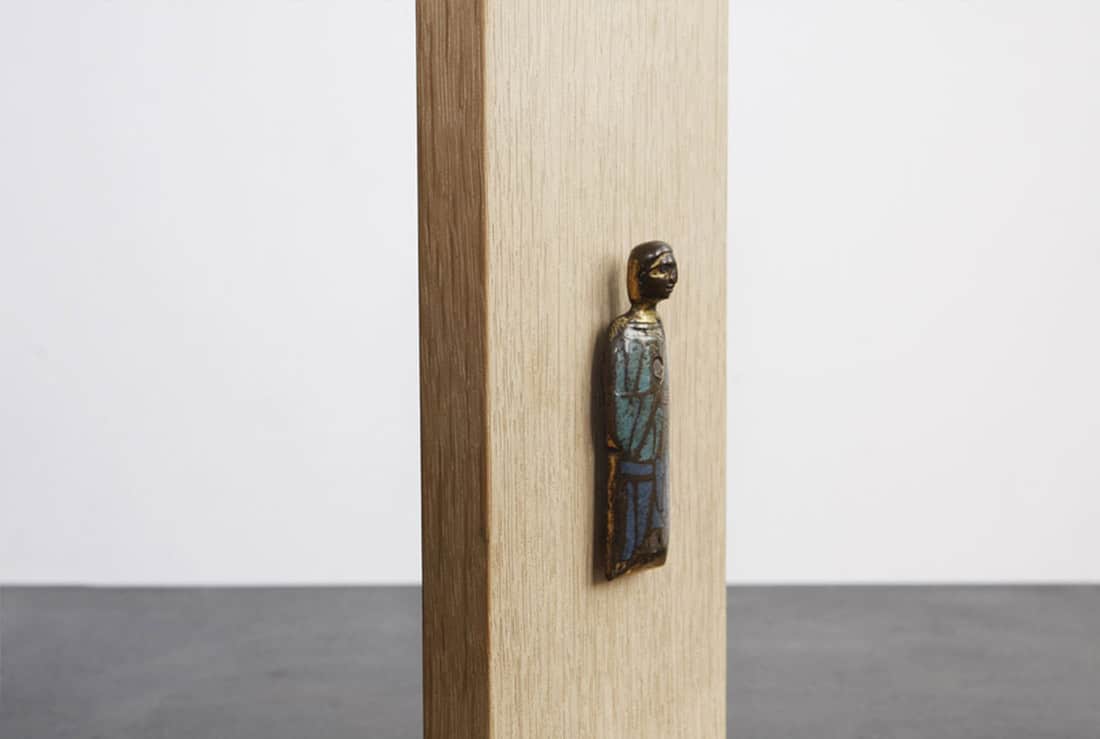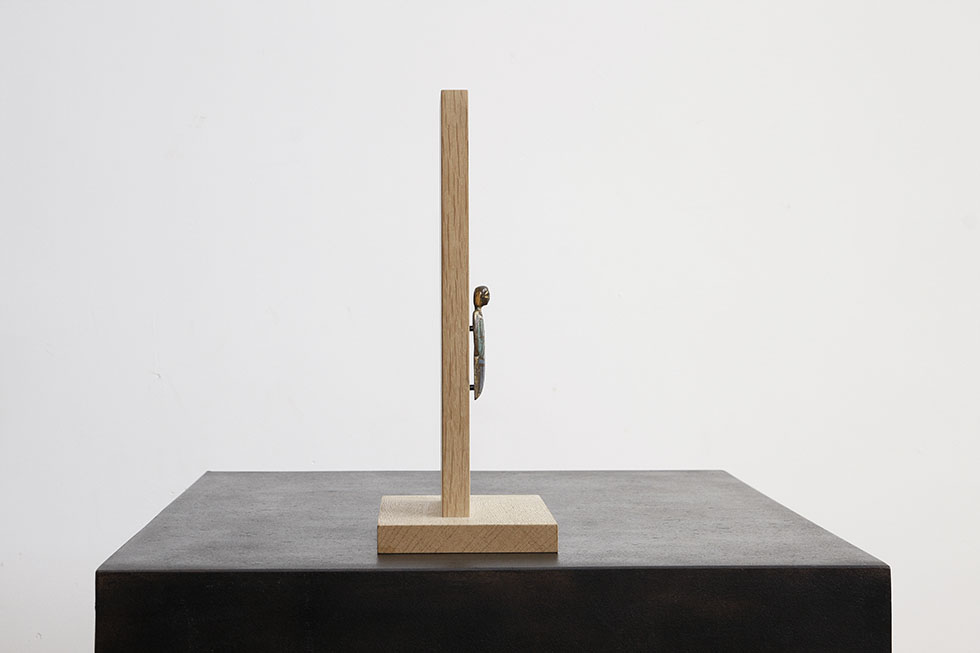LIMOGES ENAMELED FIGURE
ca. 1250

Conques
Early in the twelfth century, French goldsmiths at the Benedictine Abbey of Conques in the hills of the ancient province of Rouerque, began to create enamels whose jewel-like colours and rich, golden surfaces belied their fabrication from base copper. Within a generation, this technique was established in the area of the Limousin itself.
Reliquary casket
This figure should be grouped with a number of enamelled figures and cabochons on reliquary caskets that are dateable to about the mid-thirteenth century.
The figures, like pierced medallions were created from 2 to 5 mm copper sheet in repoussé technique. Their initial rough forms were raised from the back, and finished and articulated from the front. Gravers were used to remove metal, sharpen details and create decorative patterns, apparent in incised lines of drapery patterns. Punches were used to create decorative or textual effects.
Technique
Cells were cut out to be filled with slightly damp powdered glass. After fusing the enamel in the oven, gilding was almost the last step in the fabrication. An amalgam of mercury and gold was brushed onto the surfaces that were to be gilded in a oven on low heat. The gold did not adhere to the surface of the enamel.
Last stadium was polishing, attaching glass eyes to the figure head, and the attaching with rivets to the casket.



LIMOGES ENAMELED FIGURE
- Ca. 1250
- France
- Applique of reliquary shrine
- H. 82 mm